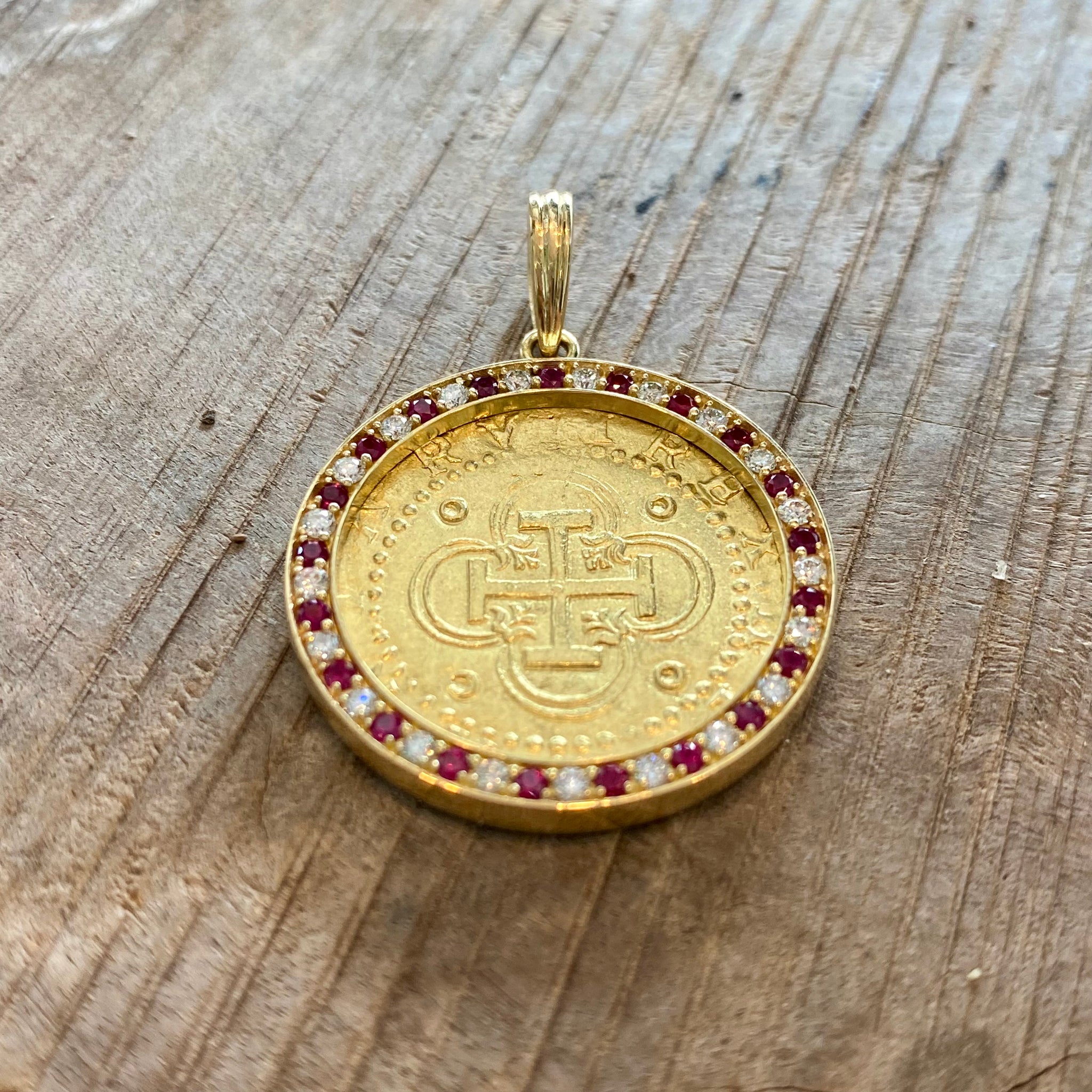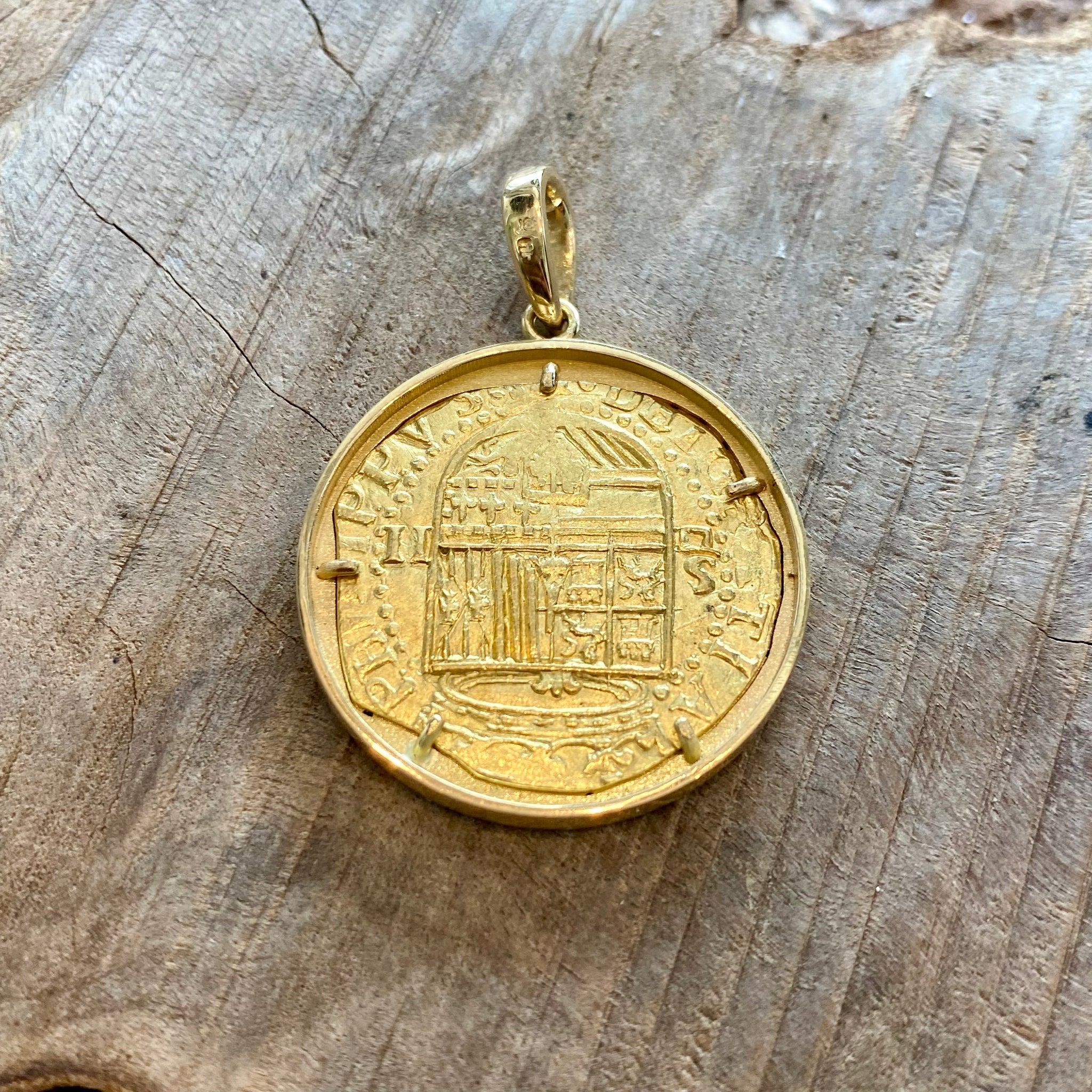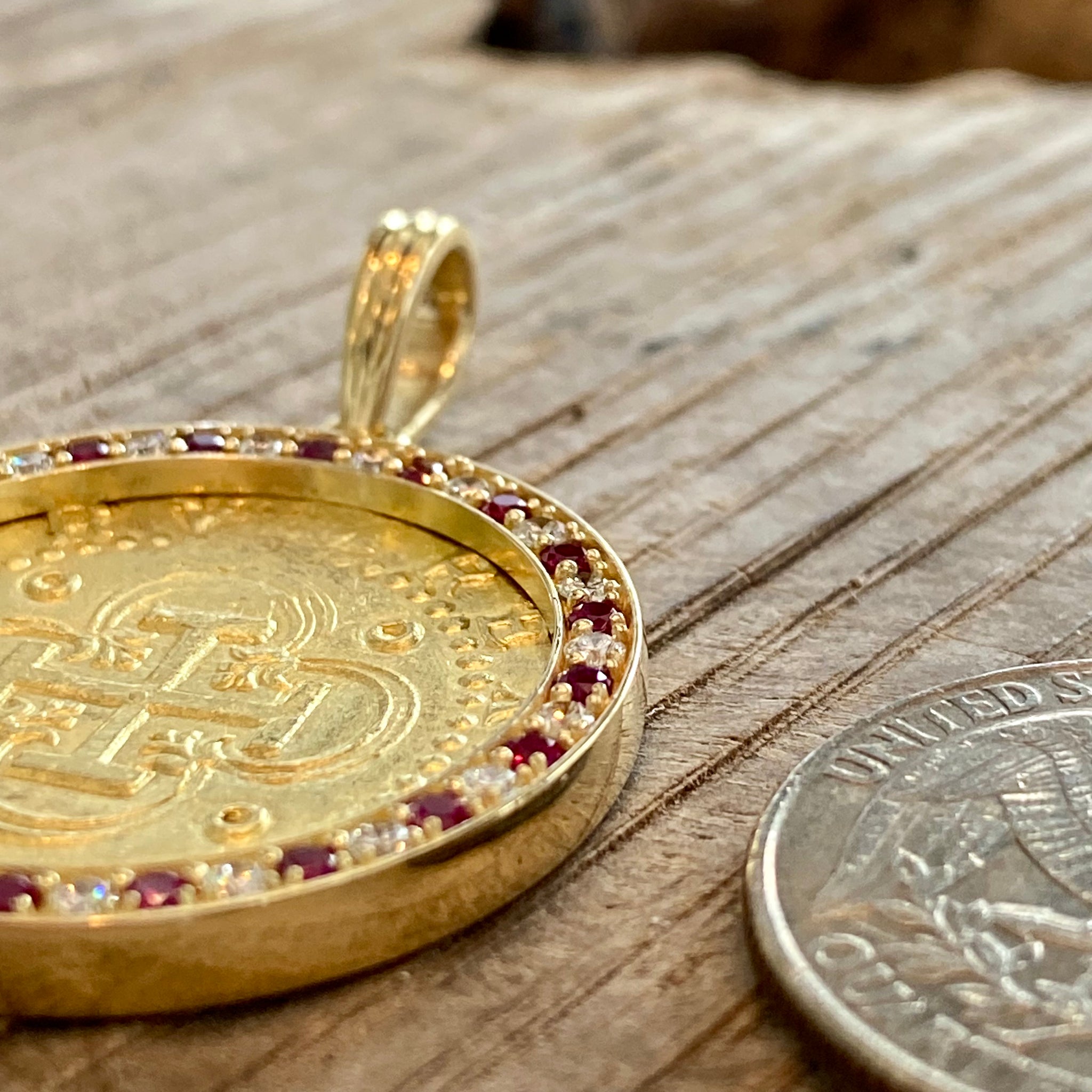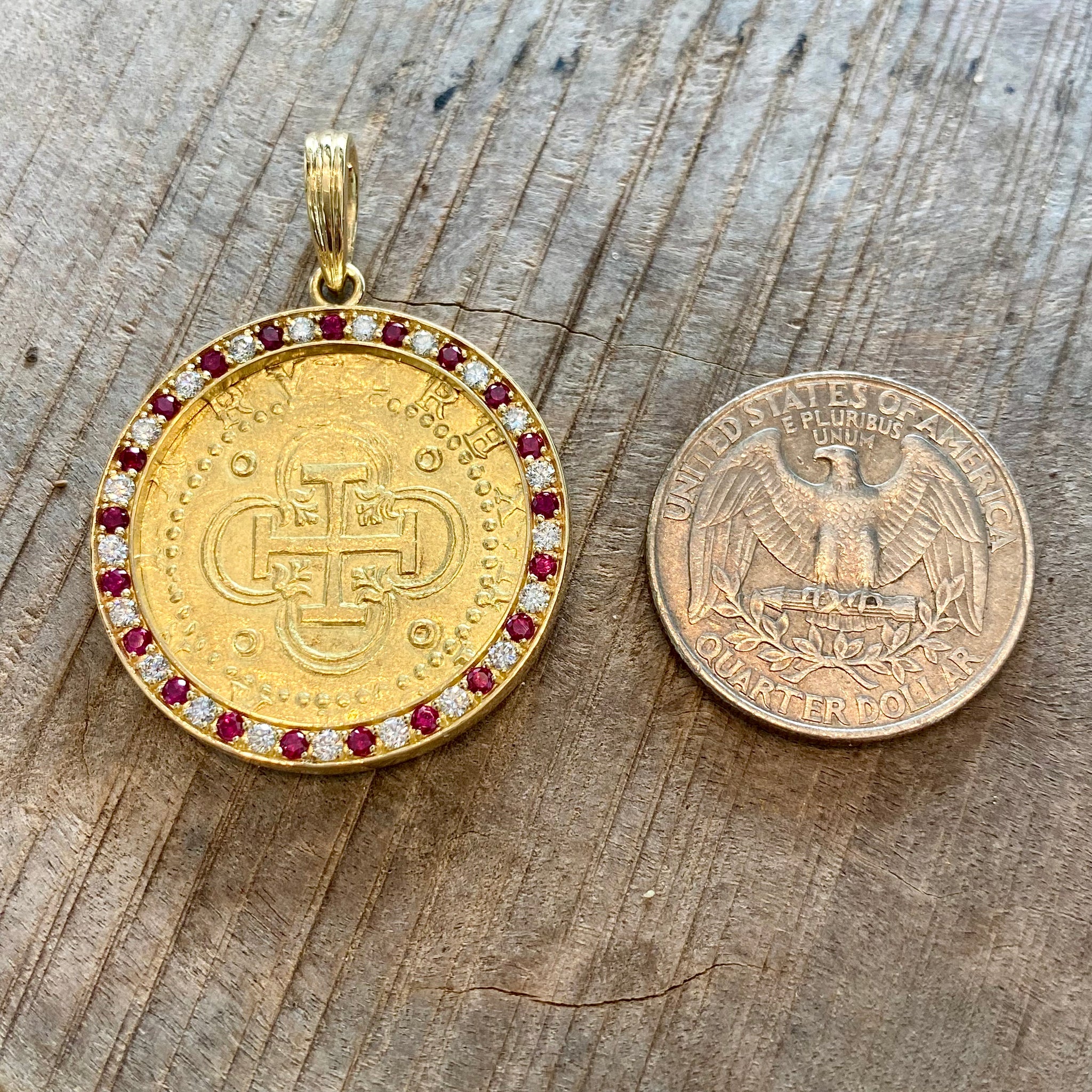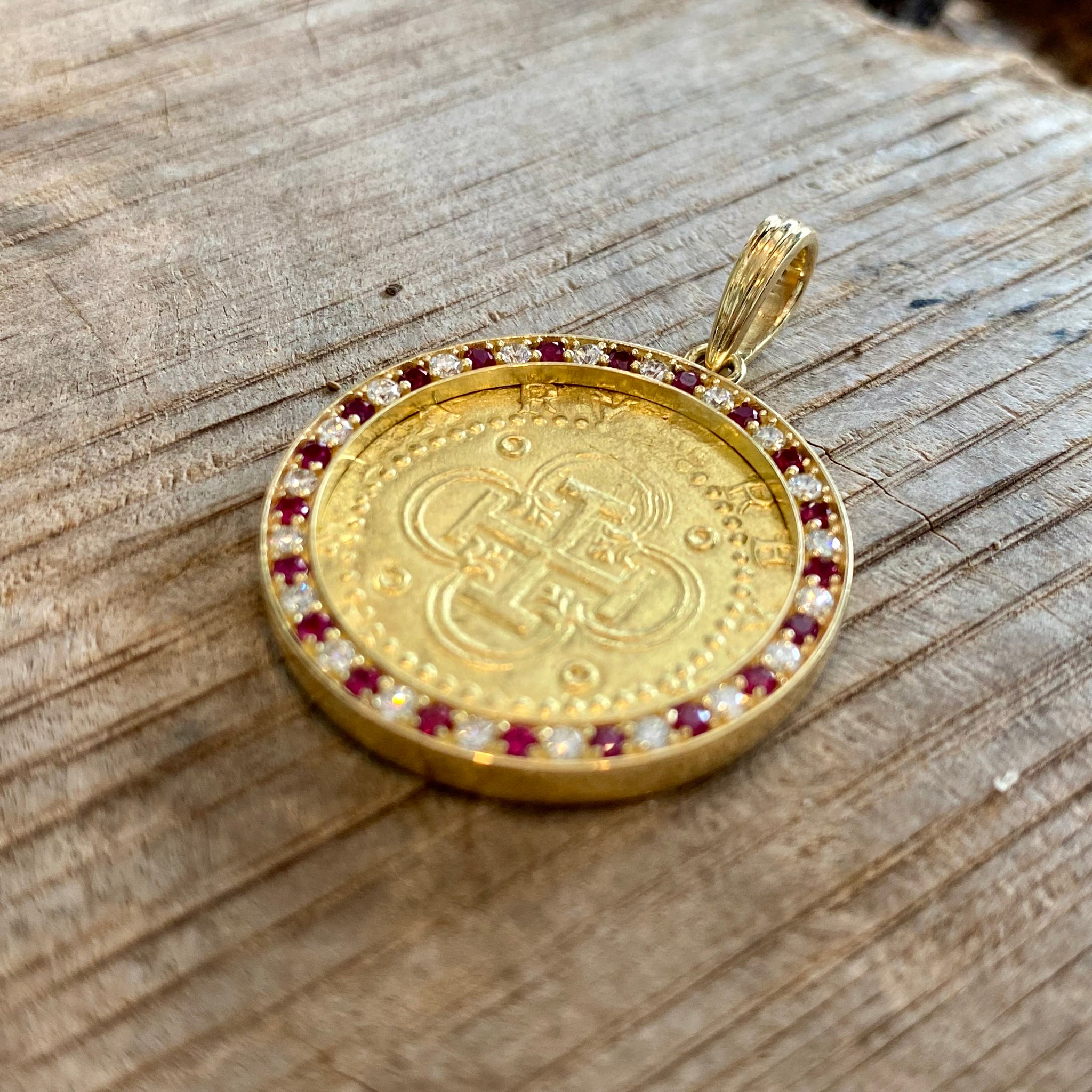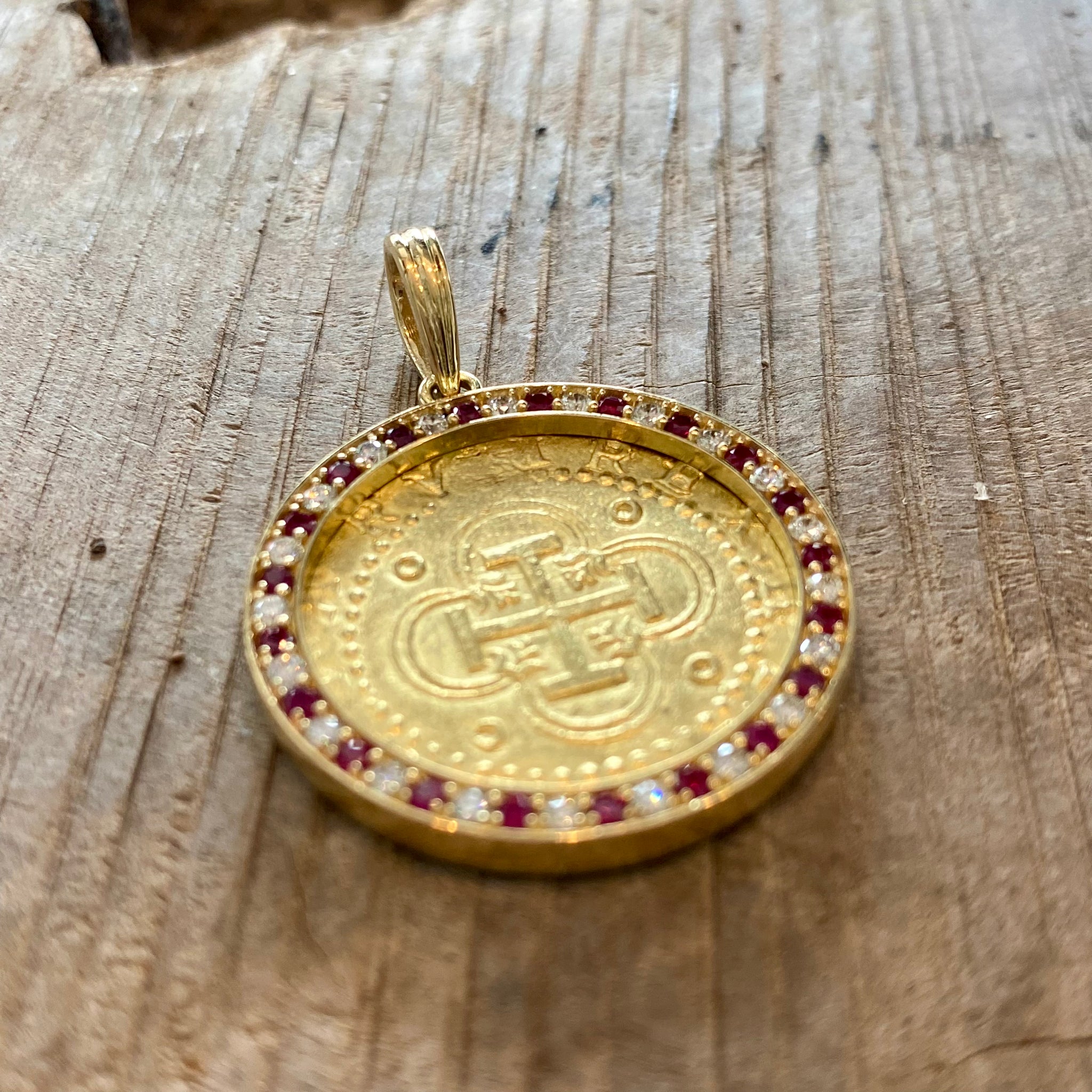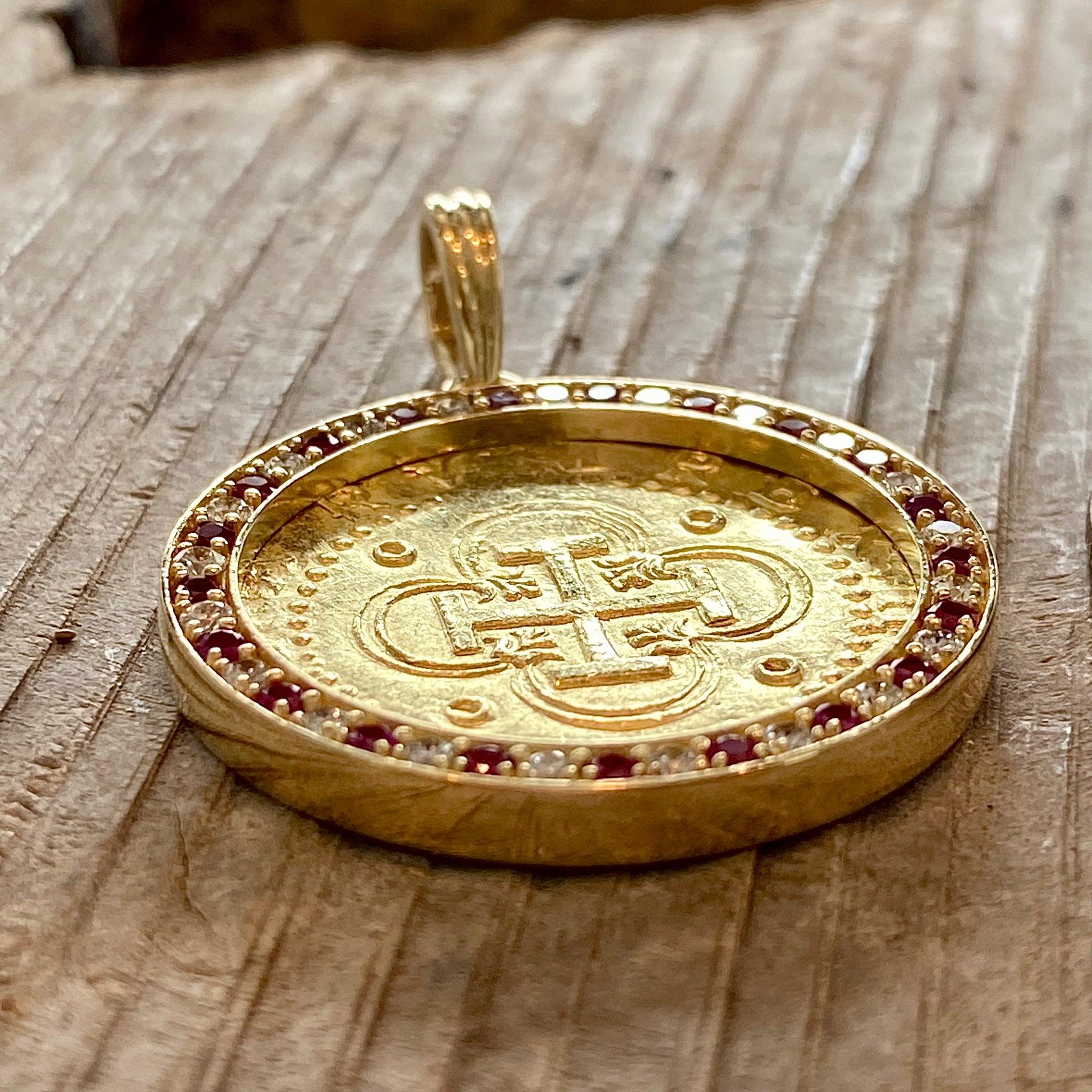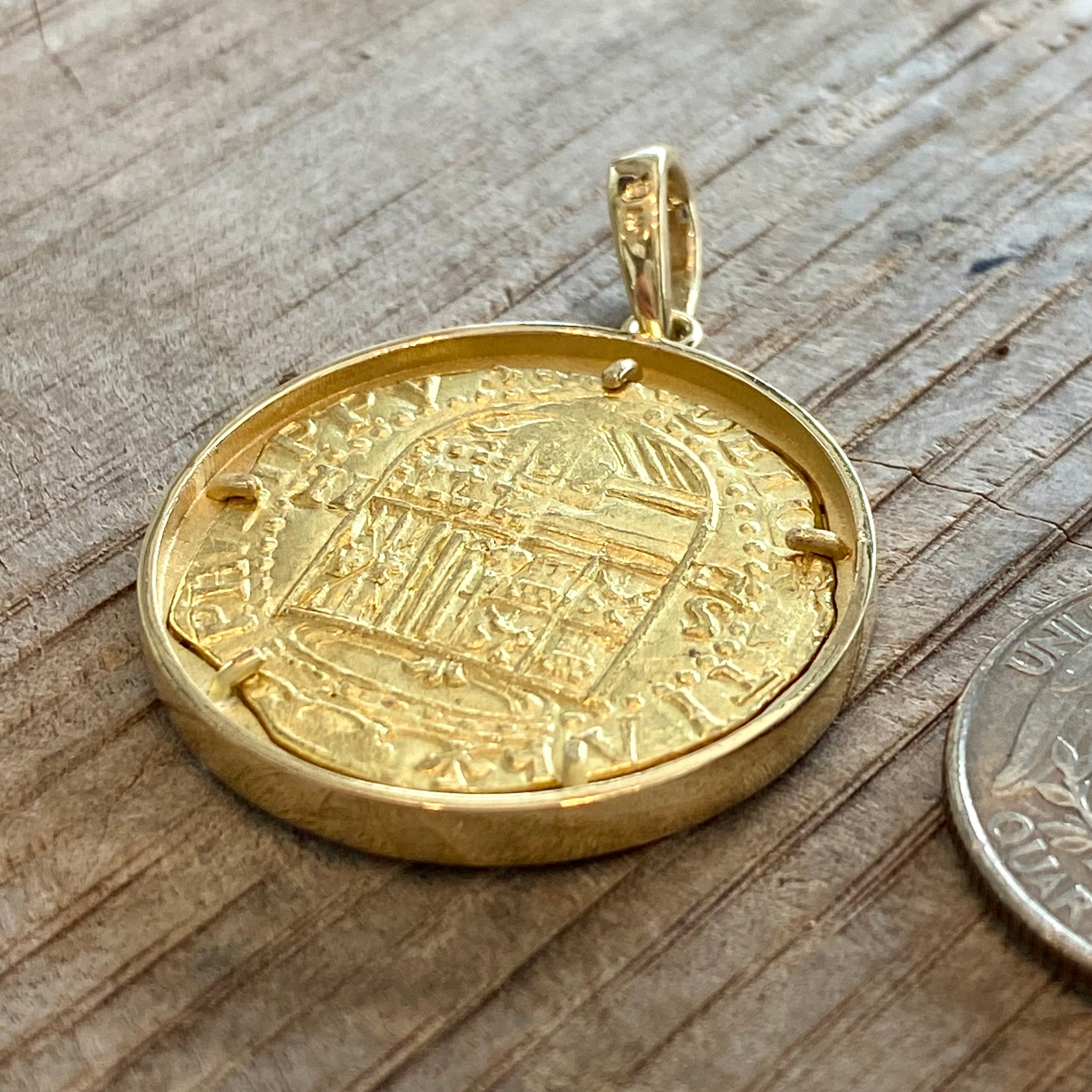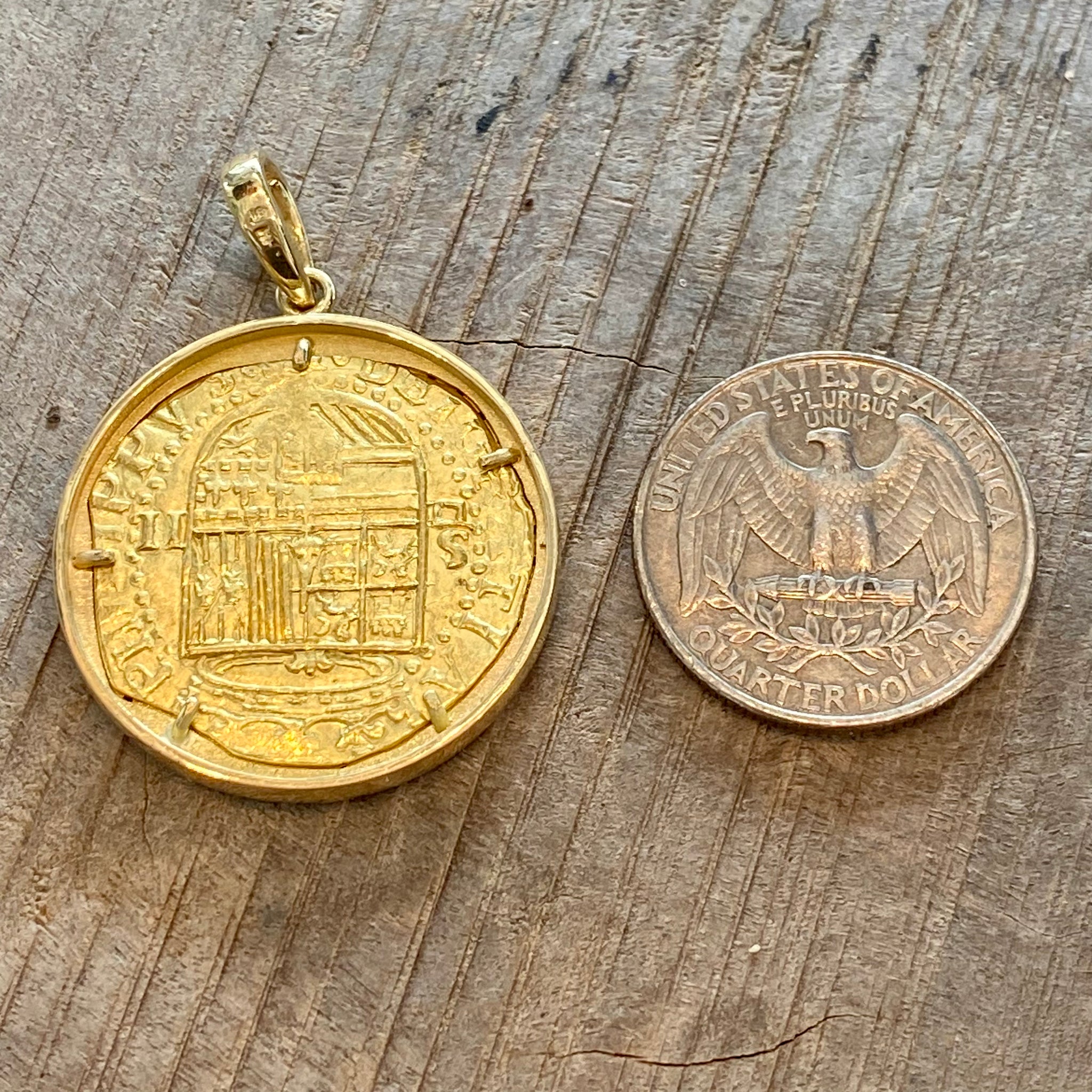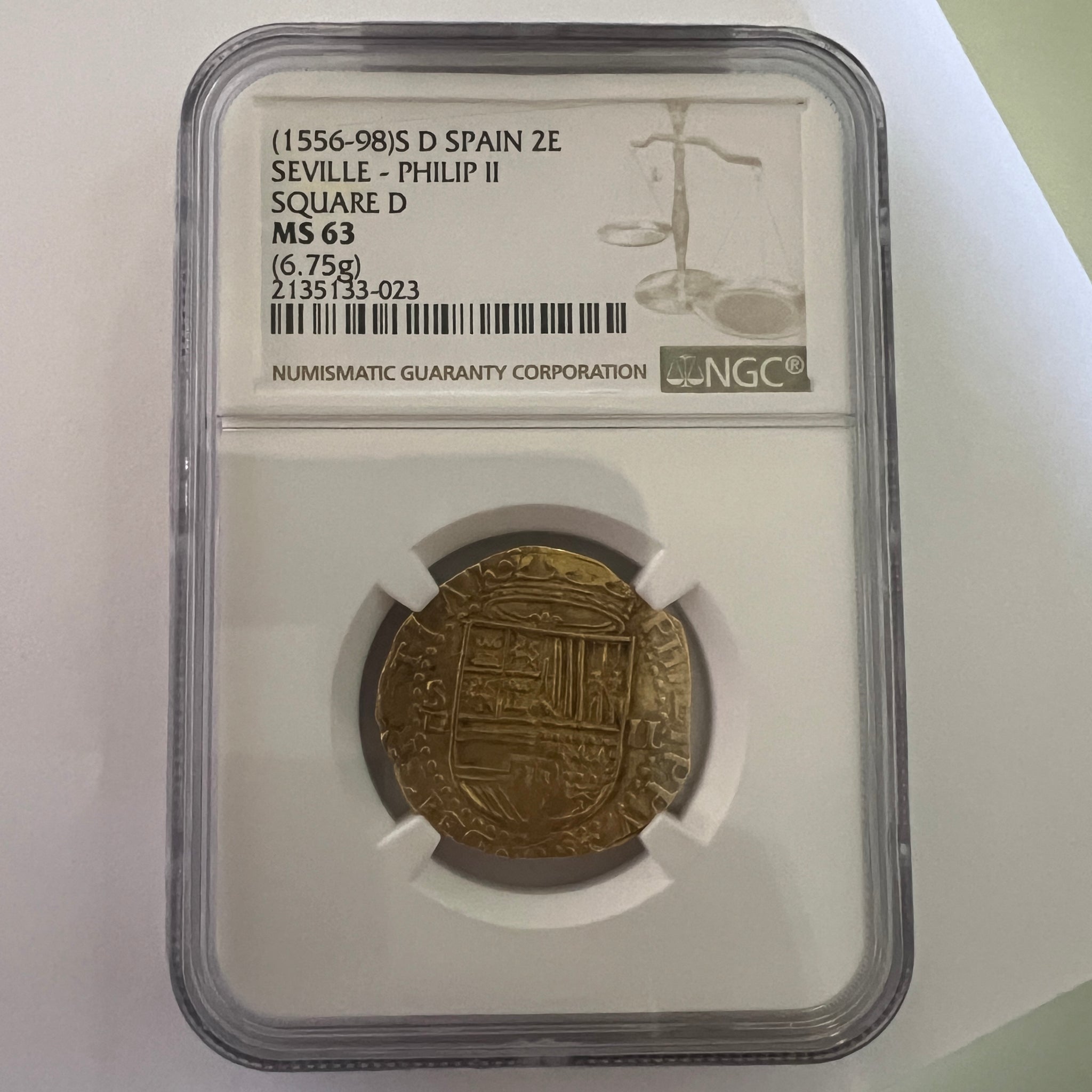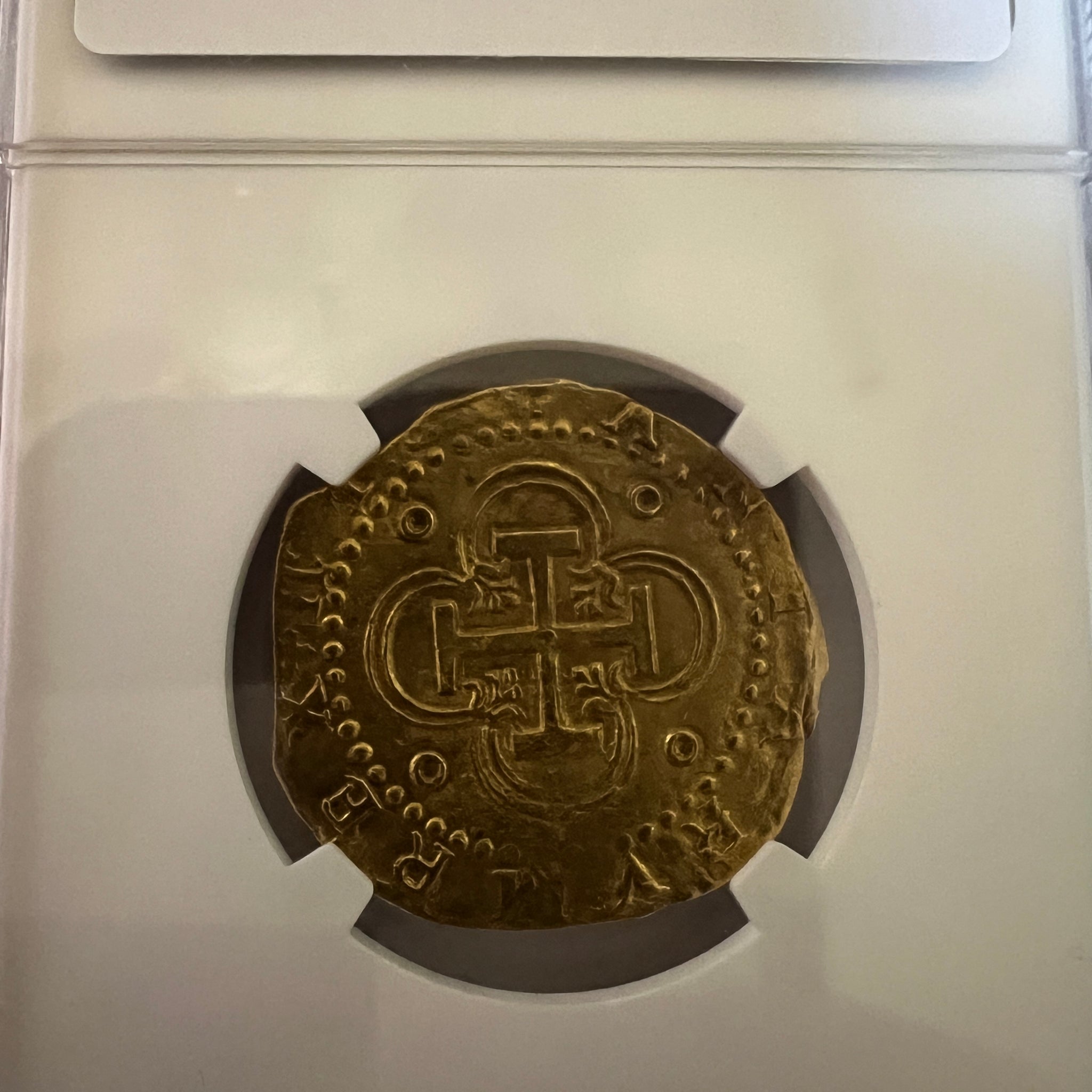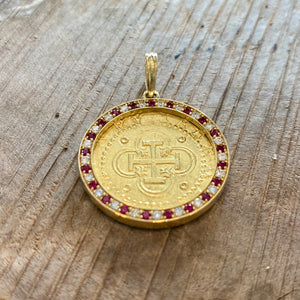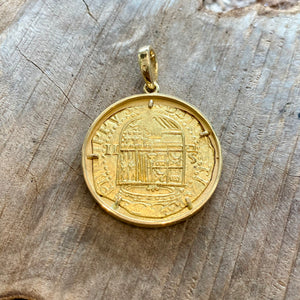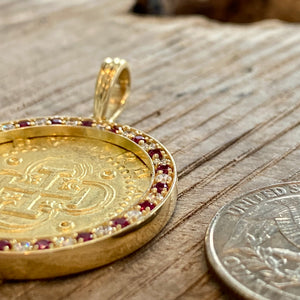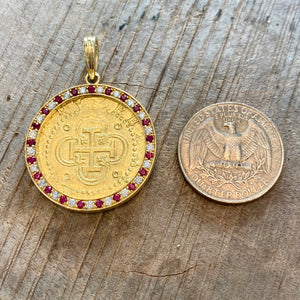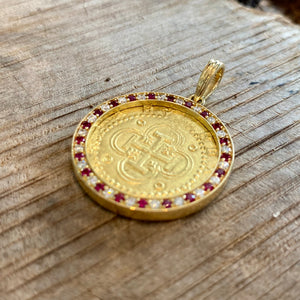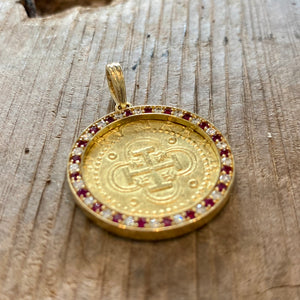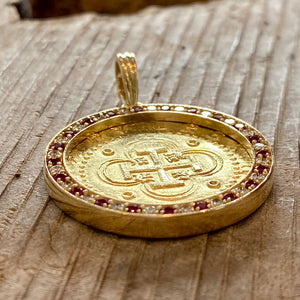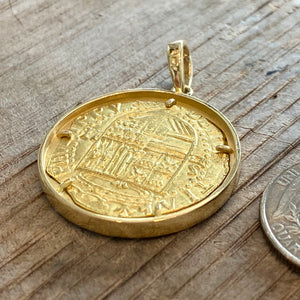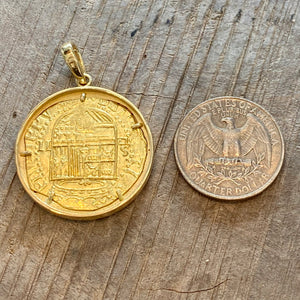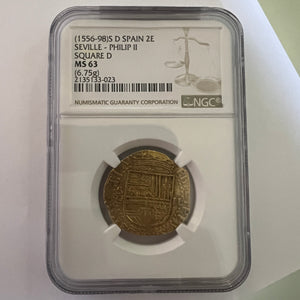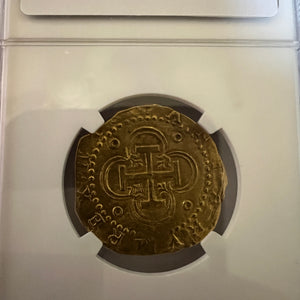Spanish Gold Cob - 2 Escudos - Philip II - Circa 1590-1597 - Grade: MS 63
$14,700
Denomination: 2 Escudos
Reign: Philip II
Date: Never dated (Circa 1590-1597)
Mint: Seville, Spain
Assayer: “D” – Square D
Weight: 6.75 grams
Grade: NGC – 2135133-023 – MS 63
Mount: 18K gold Bezel - w/ .55 ctw Diamonds and added Ruby accents
Description: Philip II gold Cob 2 Escudos ND (1556-1587) S-D MS63 NGC. Wearing a beautiful goldfish-orange patina and thorough legibility from the central motifs to the legends. Obverse: Bold strike with clearly visible Jerusalem Cross. Reverse: Hapsburg shield with Square “D” assayer motif and Seville mint marks visible clearly visible on left side. Denomination II visible on right side.
History: The Seville Mint (Spanish: Casa de la Moneda de Sevilla) was one of the seven main mints of Castile authorized to continue after 1497 by the Catholic monarchs, the rest being closed. The earliest coins minted in Seville date back to Roman times, around 15 B.C. Later, the Visigoths minted from the year 621, the Arabs after 1060, and the Christian kings from 1252. The New Mint was built in the Atarazanas orchards, next to the river and a few steps from where the colonial fleets arrived with the metals. During the reign of Felipe II, the House of Seville processed 72% of all the silver, and 87% of all the gold minted in the Iberian Peninsula, leaving the other mints almost without work. The Ordinance of 1730 for the centralization of mints eliminated all except those of Madrid and Seville, which would mint only silver and gold, and Segovia, which would be dedicated to striking copper coins. In 1861 the new Madrid factory was inaugurated and in 1869 the houses of Seville, Segovia and Jubia were closed, their equipment being sold at public auction. The House of Seville was divided into three parts and sold in 1870; a total of more than ten thousand square meters sold for about 244 thousand escudos.

